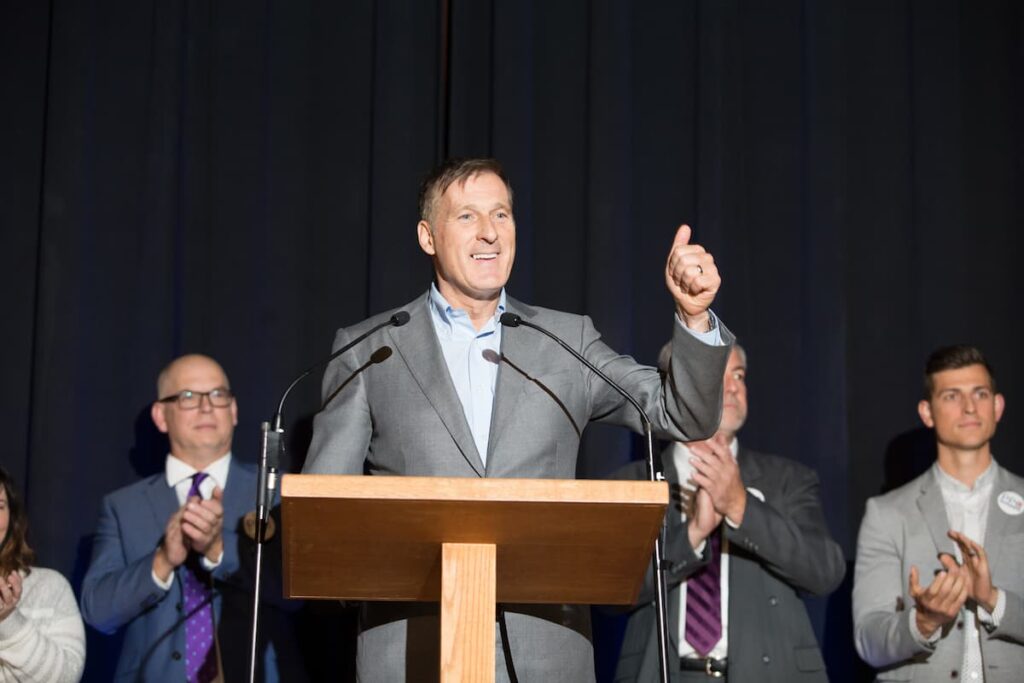The People’s Party of Canada (PPC), once considered a disruptive player in the country’s political landscape, has seen a dramatic decline in support. After a brief surge in popularity during a period marked by public health restrictions and political disillusionment, the PPC’s presence has now shrunk to near insignificance in the national vote. While its leader insists the party still has a role to play, its future remains highly uncertain.
From Protest Movement to Political Margin
The PPC first gained widespread attention as it capitalized on growing frustration during the COVID-19 pandemic. With a platform that openly opposed lockdowns, vaccine mandates, immigration policies, and the perceived influence of progressive social values, the party managed to attract a notable portion of the electorate. At its peak, it pulled in about five percent of the national vote, drawing support from Canadians who felt alienated by the traditional political establishment.
Back then, the party appeared to pose a serious threat to the more moderate Conservative bloc, especially under leadership that failed to appeal to far-right sentiments. However, the PPC’s momentum proved to be short-lived. Once the social and economic conditions that fueled its rise began to fade, so too did its voter base.
A Collapsing Share of the Vote
In the most recent federal election, the PPC secured less than one percent of the national vote—an outcome that not only highlights its declining relevance but also underscores the return of its former supporters to the Conservative fold. Even its founder and leader, who had previously been seen as the face of a rising alternative movement, failed to gain traction. In his own riding, he finished in fourth place with a significant margin separating him from the winner.
Several political observers attribute this sharp decline to a change in context. Without the backdrop of a national health crisis or widespread institutional distrust, the PPC’s messaging failed to resonate with a broad audience. Meanwhile, the mainstream Conservative Party succeeded in attracting back many right-leaning voters by refining its appeal and taking firm stances on economic and sovereignty issues.
The broader political environment also shifted toward a binary choice between the major parties. As the campaign progressed, voters began to see the race as a decision between two options, leaving little room for fringe or protest parties like the PPC. The pressure to avoid splitting the vote became a significant factor in voter behavior.
An Uncertain Path Forward
Despite these challenges, the PPC leadership remains defiant. The party has reiterated its commitment to continue promoting its ideas, regardless of popularity. Its current platform includes opposition to mass immigration, calls to eliminate diversity and inclusion policies, a push for reduced public spending, and stronger national security measures. These positions, however, have failed to gain widespread traction outside a small segment of the population.
Complicating its public image are the party’s associations with controversial right-wing media figures and platforms. The leader’s appearances on shows hosted by alt-right influencers and conspiracy theorists have drawn criticism, and accusations continue to circulate regarding the party’s appeal to extremist groups. Although attempts have been made to distance the PPC from overt racism and hate groups, these associations persist and likely contribute to its limited mainstream appeal.
The party is now looking to the example of political movements abroad, particularly the United Kingdom’s Reform Party, which experienced years of struggle before gaining a foothold in Parliament. The PPC sees this as a sign that persistence can eventually yield results. Nonetheless, political analysts remain skeptical, noting that without a new national crisis or a dramatic shift in the political landscape, there is little space for the PPC to grow.
Leadership Under Review
Following the party’s poor performance, internal changes may be on the horizon. A leadership review is expected soon, with the possibility of a new figure stepping in to reshape the party’s direction. The current leader has expressed openness to stepping down if the party members call for change, emphasizing the importance of democratic processes within the organization.
While there’s no clear indication yet of whether he will run again in a by-election or national campaign, the PPC’s leadership insists it will remain on the ballot in future elections—whether in two or four years. However, as long as the political conversation in Canada remains centered around the two dominant parties, the PPC may continue to struggle for visibility, relevance, and survival.



